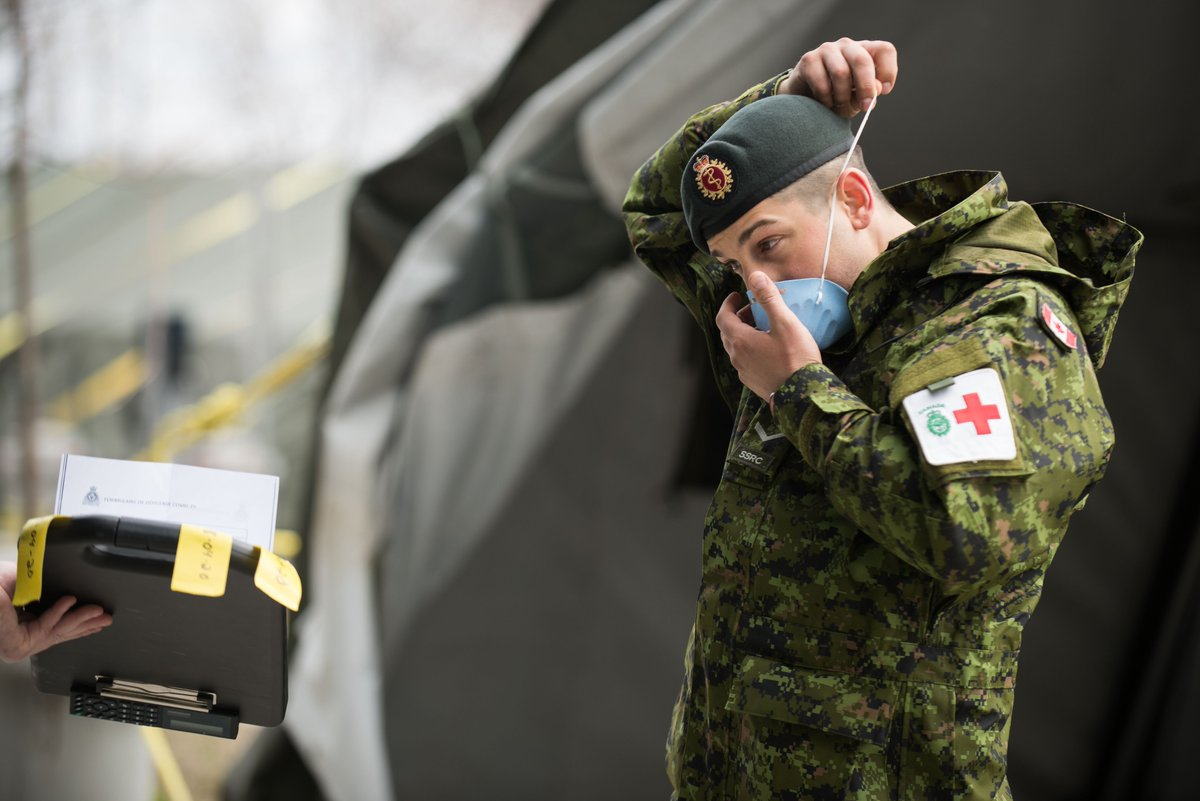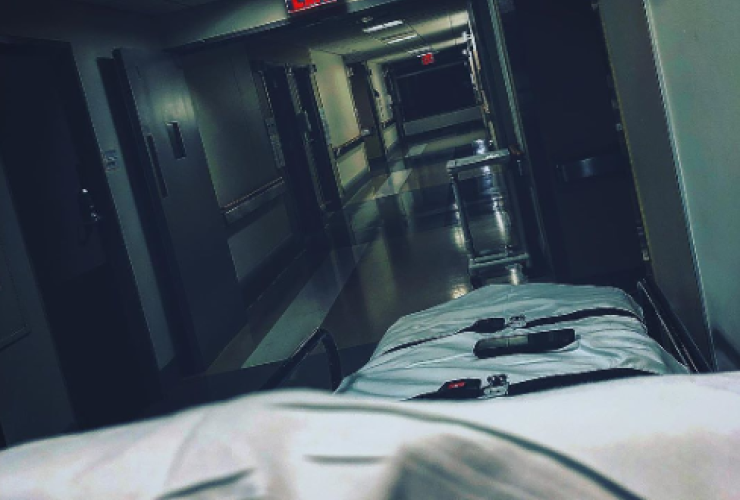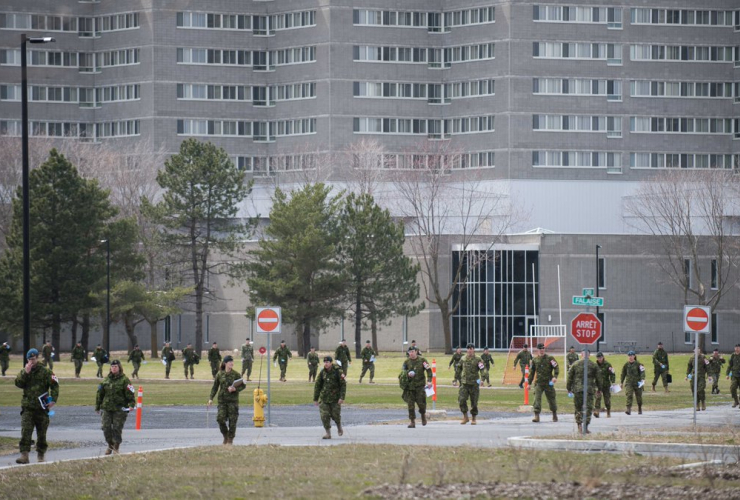In the early days of Ontario’s battle with COVID-19, before the province had even declared a state of emergency, Doris Grinspun knew the outbreak could cause nursing shortages.
Health-care workers are at high risk of contracting the novel coronavirus, and in hard-hit countries like Italy, shortages of doctors and nurses worsened the emergency. So the Registered Nurses' Association of Ontario (RNAO), of which Grinspun is the CEO, put out a call in mid-March to the nurses, nurse practitioners and nursing students it represents: Come to the front lines. We need you.
“This was never intended to be a secret. Quite the opposite,” Grinspun said, adding that the Ontario government knew from the beginning that the RNAO was assembling resources.
In the weeks that followed, the RNAO gathered a list of thousands of nurses willing to help, including about 200 who were ready and able to work in nursing homes where the virus has spread like wildfire. But the Ontario government waited weeks before asking to use those resources, and days later, Premier Doug Ford sought help from the Canadian Armed Forces.
The call for military assistance was “confusing,” Grinspun said, as the province already had more than enough nurses ready to go.
“I think there are disconnects. It’s concerning,” she said in an interview Tuesday.
“The government could have used (RNAO nurses) way, way more aggressively weeks ago. Maybe we would have avoided the army.”
In an emailed statement, Hayley Chazan, a spokesperson for Health Minister Christine Elliott, did not dispute Grinspun’s statements. Chazan also did not answer direct questions about why it was necessary to call in the military, given the nursing resources that were already available.
“We continue to hold regular conversations with the Registered Nurses' Association of Ontario about how retired nurses can help assist us in our efforts to respond to the COVID-19 outbreak,” the statement read. “We thank them for their willingness to help during this difficult time.”
Even as new infections of COVID-19 decline in the general public, the crisis caused by the virus continues in Ontario nursing homes. The virus is especially deadly for seniors and people with pre-existing conditions, and the province’s long-term care system has long suffered from problems with underfunding and understaffing.
At least 190 long-term care facilities have declared outbreaks, with at least 2,614 cases confirmed in residents and 835 dead, the province reported Thursday. At least 1,430 long-term care staff in Ontario have also tested positive for COVID-19.
Meanwhile, long-term care homes are still understaffed, the Ontario Health Coalition said in a press release Thursday.
“While measures that have been announced by the provincial government are welcome and sincerely appreciated, still there remains a dangerous disconnect,” the statement said.
The Ontario Long-Term Care Association, which represents nearly 70 per cent of the province's private, not-for-profit, charitable, and municipal long-term care homes, didn’t directly answer when asked if the government’s request for military help was essential for its members.
“Ontario’s long-term care homes have been clear about the longstanding challenges they face and the concrete actions that must be taken by government to sustain exceptional care for our most vulnerable with increasingly complex needs,” the association said in a statement.
“With COVID-19, the staffing crisis has been exacerbated, but through open and ongoing conversations with the provincial government, the OLTCA has moved forward significant changes that directly support the front lines.”

‘I don’t know if they considered this before they called the army’
Recruiting health-care workers to join the fight against COVID-19 has been a key aspect of government response to the virus. Calls for help have drawn some out of retirement, while others who had switched careers — like former Liberal cabinet minister Dr. Jane Philpott — are now back in health-care work.
Other calls have been directed at nursing students, who are eligible to be personal support workers (PSWs) after a year of nursing school. PSWs make up a significant portion of the workforce in long-term care.
The RNAO started recruiting nurses, nurse practitioners and nursing student PSWs on March 13, launching a program called VIANurse to match staff with facilities in need of help. Grinspun said she told Ministry of Health officials about the program before it launched, and is in contact with them about pandemic response on a daily basis.
The Ontario government launched its own health-care worker recruitment portal on April 7, over three weeks after the rollout of VIANurse. But the province did not ask to mobilize the thousands of nurses who had already volunteered to help through the RNAO — including about 200 who specifically put their hands up for long-term care — until three days before Ford’s April 22 call for military aid.
“I’ve never been reluctant to call for help,” the premier said in a press conference that day. “As we need more resources, we’re bringing more resources in.”
Health officials later said 250 Canadian Armed Forces personnel, in teams led by army nurses, would move in to help five hard-hit nursing homes. The teams would also include medics and other personnel to help with general tasks, officials said.
Grinspun said the workers on the RNAO’s list would be better suited for the job than army medics, as caring for seniors requires specialized knowledge — something she would have told provincial officials if they had asked. And more help would have been available through the RNAO’s list of nursing students who could work as PSWs, she added.
“I don’t know if they considered this before they called the army,” Grinspun said.
When a reporter asked the premier last Thursday whether the province had considered deploying RNAO resources before calling for military aid, Ford urged any available nurses to get in touch.
“If they contact us, they’ll be in a home immediately,” he added.
More than 250 facilities have now asked to use VIANurse resources, including about 190 nursing homes, Grinspun said.
“But not because they have been referred by the Ontario Health team or government officials,” she added. “It’s because homes have connected with us directly.”
Now, with army teams in five Toronto-area nursing homes, the province is also co-ordinating with the RNAO about deploying more nurses, Grinspun said, adding that she didn’t think the delay was ill-intentioned. “Everyone was so busy,” she said.
Chazan said in her statement that various organizations have made 1,000 requests for help through the government’s platform. Of those, 688 were for nurses, she said.
“All are in various stages of deployment,” Chazan said. She did not answer a question about how many nurses the province has deployed through the RNAO.
One of the greatest challenges we are facing is protecting our long-term care homes. We’ve used every tool in our tool box and we will continue to work hard to find a solution. We need continued support from the federal government to ensure we protect our most vulnerable. pic.twitter.com/IQrxD1bkKr
— Doug Ford (@fordnation) April 25, 2020
A crisis in long-term care
Ford has said Ontario placed an “iron ring” around the elderly, acting early and often as COVID-19 spread through long-term care. The government has given the system infusions of extra funding, and offered deliveries of personal protective equipment.
The province rolled out an “action plan” earlier this month that involved redeploying “COVID-19 SWAT teams” of experts from local hospitals. It also announced plans to begin testing everyone in long-term care and to prevent workers in those facilities from spreading the virus to other homes, and to give additional support to medical staff.
Critics have said the government was slow to act and left crucial loopholes. The government has also come under fire after a CBC News investigation found it had largely stopped doing unannounced annual inspections of long-term care homes.
Ford has said he thinks the province must open an inquiry into long-term care once the pandemic has passed. Such a probe could also delve into his government’s response to COVID-19 in long-term care.
Successive goverment have
Successive goverment have systematically underfunde the hospital bases of health care, greatly affecting the employment and earning power of all the types of nurses from fully degreed NSci. graduates to the lesser gradients of nursing service providers. Few are awarded the privilege of full time employment in order to pare the benefits costs. Most flit from one part-time assignment to another - just as the workers in LTC do - thus potentiating the spread of infections from institution to institution. Effectively, Ontario (and other jurisdictions) have ended the "professional" status of nursing, reducing it to the souless, robotic and mechanical care we now experience in too many hospitals. Thus does society condone the dis-empowerment of women - yet again. Part-time employees are "units" interchangeable, never allowed the scope to employ their true professional skills. Health care is much the poorer for this almost universal trend in "developed" countries.
The reporter should ask: who
The reporter should ask: who pays? For the military staffing, presumably the government pays. For nurses recruited through the Registered Nurses organization, were they all volunteers, or do the long term care homes have to pay their salary? This will matter to the bottom line of the care homes.






Comments